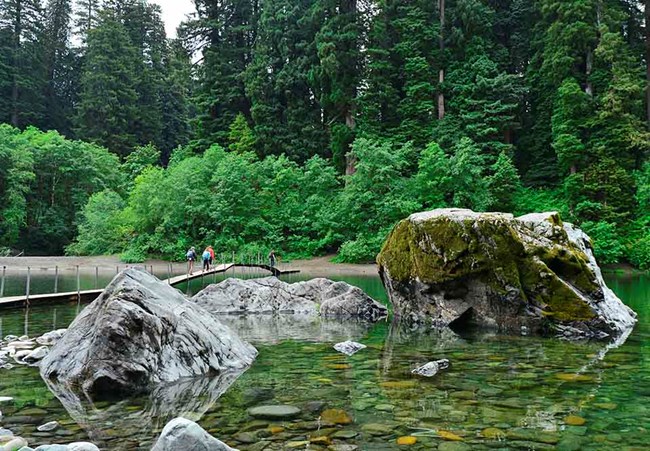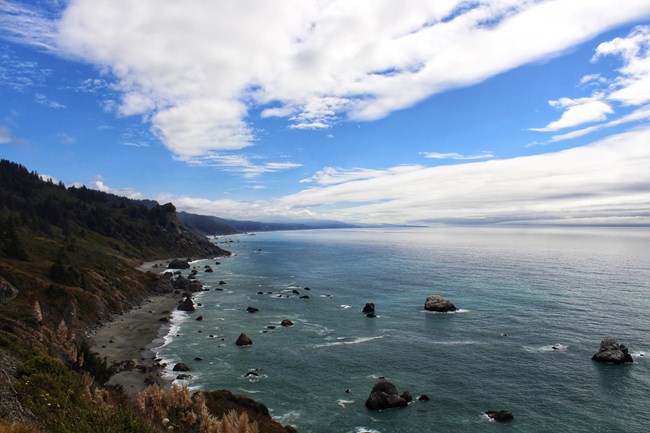
NPS / John Chao Specific Impacts in the ParkRedwood National and State Parks protect 130,000 acres of different forests, rivers and prairies, as well as 40-miles of Pacific coastline. These varied ecosystems are responding in different ways and at different rates to human-caused climate change.Data shows that the ancient old-growth redwood forests are likely to remain resilient to climate changes in the foreseeable future. In fact, since the 1970s they have been benefiting from increased carbon-dioxide in the atmosphere. Old-growth redwoods have been measured as absorbing more carbon while putting on more mass. Changes in vegetation communities due to warmer temperatures will effect species on the land. Ocean temperate and chemistry is already changing and the impacts of that are very complex. We actively monitor tide pools, bird rookeries, and beaches for indicators of population changes in our marine habitats. Snow-fed streams and rivers will have less water and warmer temperatures. Already, reduced water quality have been documented and linked to climate change. For example, fish dies-off will continue to increase due to the increased river temperatures. Studies have modeled how local bird populations will change with projected climate change scenarios. Some wildlife species will benefit, and others will suffer as climate change impacts different habitats here. Increased beach erosion caused by higher tides have already damaged archeology sites in Redwood National Park that are sacred to the Tolowa Dee-Ni' Nation. In 2015, the National Park Service created a specific report as to how might future warming alter visitation to Redwood National Park. There is an economic cost too. A 2015 study with Western Carolina University and the National Park Service identified $7,871,075 of infrastructure (twenty assets) in RNSP that is at high risk from 1-meter of sea level rise. Another 470 assets with a value of $360,024,101 was found to have limited exposure with 1-meter of sea level rise. The park is looking at options regarding the Thomas H Kuchel Visitor Center. This is the busiest visitor center in the park - and it currently is in a tsunami zone. In addition, this facility is within high-tide zones associated with projected rises in sea level. In 2018, park staff served 143,000 people in this building and it was valued at $3,484,488. The range of where coastal redwoods survive will change with any long-term changes in fog, rain or temperature patterns. Recent studies have looked at how the habitat for coastal redwoods may be impacted by climate change in the San Francisco area. 
Climate Friendly ParksRedwood National and State Parks is a climate friendly park(s). Learn more about climate friendly parks and find out where they are.
NPS / James Tiffany Learning MoreAt Redwood National and State Parks (RNSP), for the National Park Service (NPS) and the California Department of Parks and Recreation (CDPR), climate change is an issue we are facing together. Responses, Partnerships and SolutionsScience shows that human-caused climate change already has impacted Redwood National and State Parks. We have increasingly detailed and specific information as to what the impacts are, and also how projections for different climate change scenarios will be felt here. Knowledge of projected impacts allows us to plan for, adapt and find solutions. Redwoods and Climate Change: Educational VideosA selection of park produced videos about redwoods, climate change, and climate resilience.
|
Last updated: February 14, 2025

